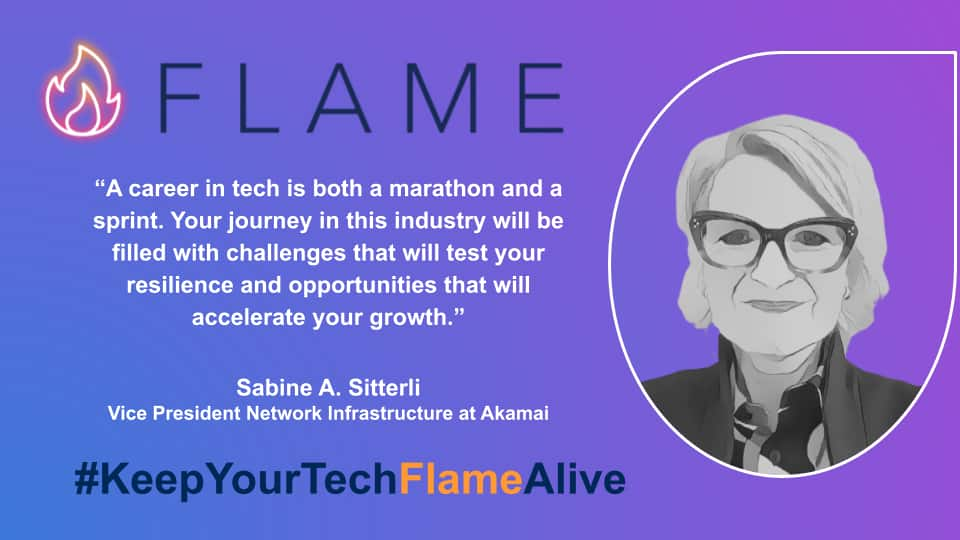The Internet Architecture Board Takes on Sustainability

Have you ever been in front of your computer, tablet, smartphone, or smart TV — streaming a movie, working remotely, shopping, or even doing some mobile banking — and wondered how you are making that connection? This process definitely could be deemed a “bit flow” that most of us take for granted because it all happens so fast (sometimes with a shorter wait time than the blink of an eye).
I can tell you from firsthand knowledge that the complexity of that connection is vast and difficult to follow. When you lay it all out, there is more than you might imagine. So, we need maps such as the one my industry colleagues, Dom Robinson and my peers from Greening of Streaming published in a valiant attempt to “chase the bit” across a sample network.

The journey of a bit (source: Dom Robinson; Greening of Streaming/Id3as)
Amazed yet? When I first saw this diagram, I realized that I took internet traffic flow for granted and that the industry certainly had a lot of work to do. However, let’s consider the diagram above also known as the "streaming eye chart" and break it down even more to put its complexity in perspective.
How much matters?
Recently, on one of our famous Akamai Wellness Days, I was watching the animated television series “Dora the Explorer” with my nephew and started to think: Are the other people watching this earth-shattering educational programming considering what it takes to get this content from its origin to their screens?
Which brings up a bigger question: Does our single stream of Dora even matter in the grand scheme of things? It probably does not matter at all; however, if you have thousands or even millions of people streaming that same episode of Dora at the same time, then the impact on energy consumption could be significant, depending on what is involved in delivering that content.

Dora exploring — and contemplating the impact of energy consumption from the internet
The network of all networks
That “chase the bit” map certainly speaks for itself in terms of complexity, but what about power consumption in fossil fuel–intense markets where some of the infrastructure resides?
Enter the internet operators that power the network of all networks, the internet.
The internet consists of a wide range of companies, organizations and operators across the globe that manage public and private networks, switches, routers, servers, and various components that all consume the mighty watt. You read that right: We need the watt to make the internet work.
Move toward a more sustainable internet
It takes an incredible amount of power to operate all the devices across the internet, and it behooves the very same internet operators and companies like Akamai to do something about it by incorporating the underlying answer that we should all be driving toward: a more sustainable internet.
So, considering that the single stream of Dora can go from tens to hundreds to thousands to millions of streams during a single period as you level up, the watts tick up quickly across the “chase the bit” map — very quickly, in fact.
Enable simple efficiency — from origin to end device
Now, more than ever, the internet needs increased sustainability to provide simple efficiency, from origin to end device. Regardless of various estimates that highlight power consumption of the internet, we need to gain a better understanding of what the internet consumes from a power perspective versus making calculated assumptions.
Considering recent news headlines claiming that data centers are causing as much carbon as the aviation industry or how viral cat videos are warming the planet: Do we have a good handle on what that really means when it comes to environmental impact?
Measure, understand, and push forward on sustainable improvements
The industry is becoming more consumed with data purity and measurement, as is happening in parallel within the sustainability and environmental sectors. As a result, the purveyors of the internet need to consider how to best measure consumption, what changes can be made across the internet spectrum, and what that equates to so that sustainable change can flow across the internet — while not sacrificing the performance that we have all come to expect.
Many developments are being made in how we can measure, understand, and push forward on sustainable improvements. Just recently, the Internet Architecture Board (IAB) launched a workshop to specifically review the environmental impact of internet applications and systems to look at opportunities for improvement.
When bringing sustainable change to the internet, it is critical to understand that the web has enabled things like remote work, digital commerce, and vacation planning — to name a few — which, one could argue, has made life more convenient. If we did not have the internet, would anything we did during the height of the COVID-19 pandemic be possible? Kevin McCallister certainly doesn’t think so.

The internet made it easier to follow stay-at-home (alone) mandates
Consider the environmental impact of applications and systems
For good or for bad, the internet has brought a lot to society and has streamlined tasks that would not otherwise be possible without it. These tasks have both environmental costs and benefits, and it is time that we take a deeper look at the environmental impact of applications and systems.
Become part of the IAB workshop
So, this is my call to all of you across the internet ecosystem to join me, my colleagues from Akamai, and the other panel members in our drive toward making a sustainable difference across the web. You, too, can participate in the Internet Architecture Board Environmental Impact of Internet Applications and Systems workshop by submitting a position paper on the topic of the internet’s environmental impact.
Let's address the challenges we have today and make a difference for the future. The topic of the internet’s environmental impact is broad and can be approached in many different ways ranging from technical, economic, and business decisions to policy creation and refinement.
Reduce impact while improving performance
A key to ongoing success in operating one of the world’s many necessities (right behind water, food, shelter, and power) is getting a diverse group of contributors and collaborators in building a more sustainable internet to address future challenges, functional needs, and operational concerns — in ways that can still improve performance while reducing its impact.
Make #shift happen
We can make a difference in making the internet a more environmentally friendly necessity. Come join Akamai to make #shift happen and let’s work together to make life better for billions of people, billions of times a day.




